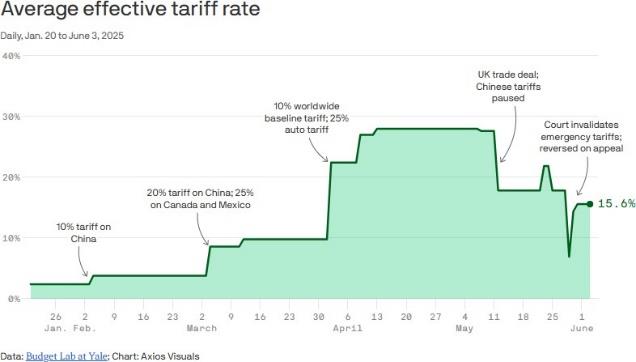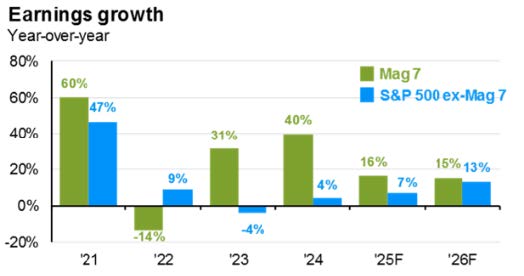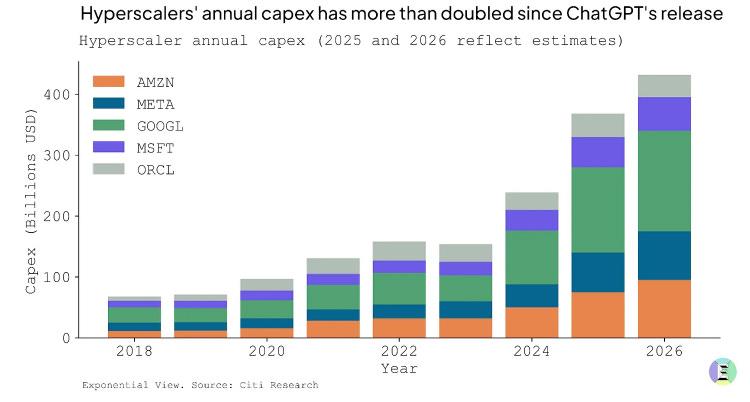Quarterly Economic and Market Review
Third Quarter 2025
- Policy Impacts — Uncertainty over policy in Washington DC remains elevated as a government shutdown takes hold. Tariffs continue to expand in the lead up to a review by the Supreme Court that will decide whether most of the tariffs enacted by President Trump are legal.
- Interest Rate Cut — The Federal Reserve cut their policy interest rate by 0.25%, the first move since December of 2024. Market prices show that investors expect more cuts to follow as the labor market softens.
- Artificial Intelligence (AI) — Investment boom continues as billions of additional dollars are committed to data centers, computer chips and energy infrastructure. Valuations for AI-related companies stretch higher.
Third Quarter Review
Government Policy Uncertainty
The impact of U.S. government policy on financial markets and the global economy remains a central focus for investors. The concern of the government shutdown, with federal funding on September 30. Historically, shutdowns have lasted anywhere from a few days to several weeks, with the longest stretching to 35 days.
For markets, the direct impact of a shutdown is likely to be limited since exchanges should remain open. The greater risk lie s in how investors react to secondary effects on the economy. Shutdowns typically have only a modest impact on consumer spending and income since most essential government functions continue, and transfer payments are rarely disrupted. While reduced government activity will impact growth, the drag is usually minor—fractions of a percentage point—if the shutdown is resolved quickly.
President Trump’s tariff program, which was paused for much of Q2 2025, resumed in July. Despite concerns of another market shock like April’s near-20% drop in the S&P 500, equities proved resilient. From July through September, the S&P 500 gained 8.1%. By quarter’s end, the average effective tariff rate stood at roughly 17% of trade weighted goods compared to 2.4% before the new tariff program. Consumers have continued to spend despite higher import costs, and the U.S. Treasury has collected over $214 billion in tariff revenue this year – mostly from U.S. consumers paying higher prices. While tariffs have raised import prices and modestly weighed on growth, the overall economy has remained robust. Real GDP grew at an annualized 3.8% in Q2—the fastest pace since 2023.


In September, however, a federal appeals court ruled that many of Trump’s tariffs were invalid, citing limits on the president’s use of emergency economic powers. The decision raised the possibility of refunding billions in tariffs. The Supreme Court will hear arguments on November 5 regarding the legality of the “reciprocal” tariff provision. For now, tariffs remain in place, and new ones on pharmaceuticals, heavy trucks and durable household goods were announced in late September.
Interest Rate Cut
Meanwhile, the Federal Reserve cut rates by 0.25% in September, bringing the federal funds target range to 4.00% –4.25%. The Fed faces a delicate balance: inflation remains a risk, but the labor market is softening. Cutting too aggressively risks reigniting inflation; delaying too long risks further job losses. This first cut of 2025 came amid intensifying political pressure. The Trump administration has repeatedly challenged the Fed’s independence, with threats to remove Chairman Jerome Powell and efforts to replace FOMC members, including the attempted firing of Lisa Cook. New FOMC member Stephen Miran dissented from the September decision, arguing instead for a deeper cut more in line with the administration’s push for faster easing. Despite political noise, capital market investors expect two additional 0.25% rate cuts possibly before year-end, depending on inflation and employment trends.
Market Update
The third quarter marked a turning point for capital markets: three straight months of positive returns falling bond yields, and broader participation across equities. After sidestepping typical August and September weakness, the S&P 500 is on track for a third consecutive year of double-digit gains. Market leadership has also broadened. While large-cap tech and AI giants still dominate headlines, smaller companies have outperformed since August. In sector terms, six of 11 S&P 500 groups posted gains in July, climbing to nine in August, evidence of healthier breadth. Still, valuations remain stretched. Equity prices relative to earnings remain well above long-term averages, particularly among large-cap AI leaders, where optimism about future profits is driving heavy near-term spending. By contrast, small caps benefited from more modest valuations and easing financing costs, fueling a late-quarter rally. Bonds also gained ground. After the September cut, yields initially rose on stronger employment data and increased Treasury issuance. Since then investors have increased caution given inflation risks, heavy debt supply and fiscal uncertainty. The Treasury yield curve steepened modestly during Q3: two-year yields fell on expectations of further easing, while long-term yields held steady under pressure from inflation and deficit concerns.
Topic in Focus: Artificial Intelligence
Artificial intelligence remains a powerful driver of both markets and economic investment. Billions continue to flow into data centers, chips and energy infrastructure. Expectations of future adoption and profits have risen sharply. The main challenge of investing in the AI space right now is fast moving/escalating expectations. Over the summer, expectations for near-term AIrelated capital expenditure (capex) growth picked up dramatically. For example, 2026 capex expectations for Meta and Microsoft rose by $20 billion each, with Meta’s rise happening essentially overnight after their 2nd quarter earnings report. Already strong expectations began to get stronger. Next came a flurry of announcements related to OpenAI's future spending plans, most notably seen in Oracle's announcement of a $300 billion five-year deal to provide OpenAI with computers starting in 2027.


It is that last, and most significant, escalation from OpenAI that is challenging to think about. Since the beginning of the AI boom, the primary concern has been centered on the sustainability of the spending. It remains clear that the shift to accelerated computing is a powerful long-term secular trend with the funding for investments coming from extremely cash-rich technology companies who view this as an existential shift for their businesses. While the expectations for future spending amongst these companies continue to rise, it is rising significantly faster for companies that do not have the same financial strength as the “cash printing machines” of Microsoft or Google. Investors must now consider whether the large scale plans of OpenAI begin to run up against real constraints, such as power generation and financing.


As these AI-related spending expectations have risen, so have the valuations of the companies involved in this industry. We are doing detailed work to determine whether current valuations accurately reflect any of these possible real-world constraints. During times like these, it is important to reinforce that our valuation discipline and risk management frameworks are integral to deliver long-term value for our clients. We will not compromise these core principles to chase headlines.
Source: https://www.derekthompson.org/p/this-is-how-the-ai-bubble-will-pop (Hyperscaler and Tech capex contrib to GDP charts)
Investment, Securities and Insurance Products:
NOT
FDIC INSUREDNOT BANK
GUARANTEEDMAY
LOSE VALUENOT INSURED BY ANY
FEDERAL AGENCYNOT A
DEPOSITAssociated Bank and Associated Bank Private Wealth are marketing names AB-C uses for products and services offered by its affiliates. Securities and investment advisory services are offered by Associated Investment Services, Inc. (AIS), member FINRA/SIPC; insurance products are offered by licensed agents of AIS; deposit and loan products and services are offered through Associated Bank, N.A. (ABNA); investment management, fiduciary, administrative and planning services are offered through Associated Trust Company, N.A. (ATC); and Kellogg Asset Management, LLC® (KAM) provides investment management services to AB-C affiliates. AIS, ABNA, ATC, and KAM are all direct or indirect, wholly-owned subsidiaries of AB-C. AB-C and its affiliates do not provide tax, legal or accounting advice. Please consult with your advisors regarding your individual situation. (1024)
Readers should not consider this update of the economic and investment environment as analysis upon which to make investment decisions or recommendations of strategies or particular securities. Past performance is no guarantee of future results. (1414)
All trademarks, service marks and trade names referenced in this material are the property of their respective owners.

